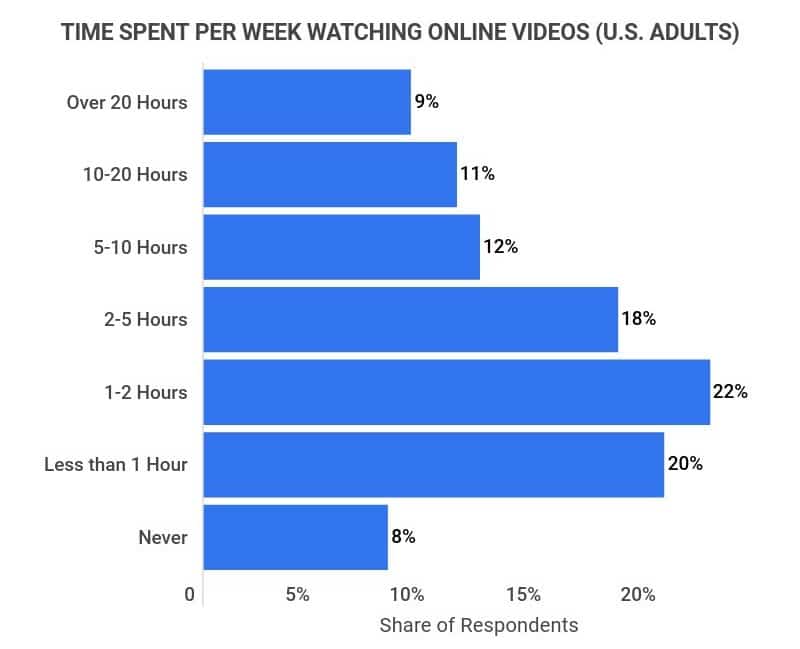What’s Behind the Massive Video Upload Numbers on YouTube?
YouTube, the world’s largest video-sharing platform, has been a hub for user-generated content since its inception in 2005. With over 2 billion monthly active users, the platform has become an essential part of modern entertainment, education, and marketing. One of the most fascinating aspects of YouTube is the sheer volume of content being uploaded every day. But have you ever wondered how many videos are uploaded to YouTube a day? The answer is staggering.
According to recent statistics, YouTube receives over 500 hours of video content every minute, translating to approximately 720,000 hours of video uploads per day. This massive influx of content is a testament to the platform’s popularity and the creativity of its users. But what drives this phenomenon? To understand the factors behind YouTube’s massive video upload numbers, it’s essential to delve into the platform’s history, user behavior, and content trends.
YouTube’s algorithm, which prioritizes content based on user engagement, watch time, and relevance, plays a significant role in shaping the platform’s video upload landscape. The algorithm’s constant evolution has led to a shift in user behavior, with creators focusing on producing high-quality, engaging content that resonates with their audiences. This, in turn, has contributed to the increasing number of video uploads on the platform.
Another factor contributing to the massive video upload numbers is the rise of user-generated content. With the advent of smartphones and affordable video editing software, creating high-quality video content has become more accessible than ever. This has led to a proliferation of vlogs, live streams, and DIY tutorials, which have become incredibly popular among YouTube users.
As we explore the world of YouTube video uploads, it’s clear that the platform’s massive numbers are driven by a combination of factors, including user behavior, algorithmic changes, and the rise of user-generated content. In the next section, we’ll explore the challenges of estimating the exact number of videos uploaded to YouTube daily and provide insights into how this can be achieved using publicly available data and trends.
How to Estimate the Number of Videos Uploaded to YouTube Daily
Estimating the exact number of videos uploaded to YouTube daily is a daunting task, due to the platform’s constantly changing algorithms and user behavior. However, by analyzing publicly available data and trends, it’s possible to make an educated estimate. One way to approach this is by examining YouTube’s own statistics, such as the number of hours of content uploaded per minute, which stands at over 500 hours.
Another approach is to look at the number of active YouTube channels, which currently stands at over 31 million. By assuming an average upload frequency per channel, it’s possible to estimate the total number of videos uploaded daily. However, this method is not foolproof, as upload frequencies vary greatly between channels.
A more accurate approach is to analyze data from third-party tools, such as Social Blade or TubeBuddy, which provide insights into YouTube’s upload trends and statistics. These tools can help estimate the number of videos uploaded daily, as well as provide information on the types of content being uploaded and the channels that are uploading them.
It’s also important to consider the impact of YouTube’s algorithm on video uploads. The algorithm’s constant evolution can affect the types of content being uploaded, as well as the frequency of uploads. For example, the algorithm’s emphasis on watch time and engagement has led to an increase in longer-form content, such as vlogs and educational videos.
By combining these approaches and analyzing publicly available data and trends, it’s possible to estimate that over 720,000 hours of video content are uploaded to YouTube daily. This translates to approximately 500,000 to 600,000 individual videos, assuming an average video length of 10-15 minutes.
While this estimate is not exact, it provides a rough idea of the sheer volume of content being uploaded to YouTube daily. As the platform continues to evolve and grow, it will be interesting to see how these numbers change and how they are affected by emerging trends and technologies.
The Rise of User-Generated Content on YouTube
The rise of user-generated content on YouTube has been a significant contributor to the platform’s massive video upload numbers. With the advent of smartphones and affordable video editing software, creating high-quality video content has become more accessible than ever. This has led to a proliferation of vlogs, live streams, and DIY tutorials, which have become incredibly popular among YouTube users.
Vlogging, in particular, has become a staple of YouTube content. Many users have turned to vlogging as a way to share their daily lives, thoughts, and experiences with others. This has led to a vast array of vlogging content, ranging from beauty and fashion vlogs to gaming and travel vlogs. According to a recent study, vlogging accounts for over 20% of all YouTube content, making it one of the most popular types of user-generated content on the platform.
Live streaming has also become increasingly popular on YouTube. With the rise of platforms like YouTube Live and Facebook Live, users can now broadcast live video content to a global audience. This has led to a new wave of live streaming content, including concerts, Q&A sessions, and even live cooking demonstrations.
DIY tutorials have also become a staple of YouTube content. With the rise of DIY culture, many users have turned to YouTube to share their DIY projects and tutorials with others. This has led to a vast array of DIY content, ranging from woodworking and crafting to home improvement and repair.
The rise of user-generated content on YouTube has not only contributed to the platform’s massive video upload numbers but has also changed the way we consume and interact with video content. With the ability to create and share high-quality video content, users have become more engaged and active on the platform, leading to a more dynamic and interactive community.
As the popularity of user-generated content continues to grow, it will be interesting to see how this trend affects the overall video upload numbers on YouTube. Will we see a continued rise in vlogging, live streaming, and DIY tutorials, or will new types of content emerge to take their place? Only time will tell, but one thing is certain – user-generated content will continue to play a major role in shaping the future of YouTube.
YouTube’s Algorithm and Its Impact on Video Uploads
YouTube’s algorithm plays a crucial role in determining the visibility and engagement of video content on the platform. The algorithm’s primary goal is to provide users with the most relevant and engaging content possible, based on their viewing history, search queries, and other factors. However, this algorithm also has a significant impact on video uploads, as it can affect the types of content that are uploaded and the frequency of uploads.
The algorithm prioritizes content based on a variety of factors, including watch time, engagement, relevance, and audience retention. This means that videos that are more engaging, relevant, and retain viewers’ attention are more likely to be promoted by the algorithm and receive more views. Conversely, videos that are less engaging or relevant may be demoted or receive fewer views.
Creators can optimize their videos for better visibility and engagement by using keywords, tags, and descriptions that accurately reflect the content of their video. They can also use thumbnails and titles that are attention-grabbing and relevant to the content of the video. Additionally, creators can use YouTube Analytics to track their video’s performance and adjust their strategy accordingly.
The algorithm’s impact on video uploads can also be seen in the types of content that are uploaded. For example, the algorithm’s emphasis on watch time and engagement has led to an increase in longer-form content, such as vlogs and educational videos. This is because longer-form content tends to perform better in terms of watch time and engagement, which are key factors in the algorithm’s ranking system.
Furthermore, the algorithm’s impact on video uploads can also be seen in the frequency of uploads. Creators who upload content regularly tend to perform better in terms of visibility and engagement, as the algorithm favors channels that consistently produce high-quality content. This has led to an increase in the number of creators who upload content on a daily or weekly basis, as they seek to maximize their visibility and engagement on the platform.
Overall, YouTube’s algorithm has a significant impact on video uploads, as it can affect the types of content that are uploaded, the frequency of uploads, and the visibility and engagement of video content. By understanding how the algorithm works and optimizing their videos accordingly, creators can increase their chances of success on the platform.
Breaking Down the Types of Videos Uploaded to YouTube
YouTube is a vast and diverse platform, with a wide range of video content being uploaded every day. To understand the types of videos that are commonly uploaded to YouTube, it’s helpful to categorize them into different categories. Here are some of the most popular types of videos uploaded to YouTube:
Music videos are one of the most popular types of videos on YouTube, with millions of views every day. Many artists and record labels use YouTube to promote their music and reach a wider audience. Product reviews are another popular type of video, with many reviewers sharing their opinions on the latest gadgets, technology, and consumer products.
Educational content is also a significant category on YouTube, with many creators producing videos on topics such as science, history, and language. These videos are often used by students and educators to supplement their learning and teaching. Gaming content is another popular category, with many gamers sharing their gameplay, walkthroughs, and reviews of the latest games.
DIY tutorials and how-to videos are also popular on YouTube, with many creators sharing their expertise on topics such as woodworking, crafting, and home improvement. Vlogs, or video blogs, are another popular type of video, with many creators sharing their daily lives, thoughts, and experiences with their audience.
According to YouTube’s own statistics, the most popular categories on the platform are music, gaming, and vlogging. These categories account for a significant proportion of the platform’s total views and engagement. However, other categories, such as educational content and product reviews, are also gaining popularity and attracting large audiences.
Understanding the types of videos that are commonly uploaded to YouTube can provide valuable insights into the platform’s content landscape. By analyzing these categories and their popularity, creators can gain a better understanding of what types of content are in demand and how to optimize their own videos for better visibility and engagement.
The Role of Influencers and Brands in YouTube’s Video Uploads
Influencers and brands play a significant role in YouTube’s video upload numbers. Many influencers and brands use YouTube as a platform to promote their products, services, and ideas to a large and engaged audience. According to a recent study, influencers and brands account for a significant proportion of YouTube’s total video uploads, with many of them uploading content on a daily or weekly basis.
Influencers, in particular, have become a major force on YouTube. Many influencers have built large followings on the platform, and use their influence to promote products, services, and ideas to their audience. Brands have also taken notice of the power of influencers, and many have partnered with them to promote their products and services.
Brands also use YouTube to upload a wide range of content, including product demos, tutorials, and advertisements. Many brands have also created their own YouTube channels, where they upload content on a regular basis. According to a recent study, brands account for a significant proportion of YouTube’s total video uploads, with many of them uploading content on a daily or weekly basis.
The strategies used by influencers and brands on YouTube can have a significant impact on the platform’s video upload numbers. For example, many influencers and brands use YouTube’s algorithm to their advantage, by optimizing their videos for better visibility and engagement. They also use social media platforms, such as Twitter and Instagram, to promote their YouTube content and attract more viewers.
However, the impact of influencers and brands on YouTube’s video upload numbers is not without controversy. Some critics argue that the platform’s algorithm favors influencers and brands over individual creators, making it harder for them to get their content seen. Others argue that the platform’s emphasis on monetization has led to a proliferation of low-quality content, which can be detrimental to the platform’s overall quality.
Despite these controversies, it is clear that influencers and brands play a significant role in YouTube’s video upload numbers. As the platform continues to evolve, it will be interesting to see how the strategies used by influencers and brands adapt to the changing landscape.
What the Future Holds for YouTube’s Video Uploads
As YouTube continues to evolve, it’s interesting to speculate on the future of video uploads on the platform. One trend that’s likely to shape the future of YouTube’s video uploads is the increased use of mobile devices. With more and more people accessing YouTube on their smartphones and tablets, it’s likely that we’ll see a rise in mobile-friendly content, such as vertical videos and shorter-form content.
Another trend that’s likely to impact YouTube’s video uploads is the rise of virtual reality (VR) content. As VR technology becomes more accessible and affordable, we’re likely to see more creators experimenting with VR content on YouTube. This could include 360-degree videos, VR experiences, and even live VR streams.
The rise of new social media platforms is also likely to impact YouTube’s video uploads. As platforms like TikTok and Instagram Reels continue to grow in popularity, we may see more creators experimenting with shorter-form content and new formats, such as interactive videos and live streams.
Despite these trends, it’s likely that YouTube will continue to be a major player in the world of online video. With its massive user base and vast library of content, YouTube is well-positioned to adapt to changing trends and technologies. As the platform continues to evolve, it will be interesting to see how these developments shape the future of YouTube’s video uploads.
One thing is certain: the future of YouTube’s video uploads will be shaped by the creativity and innovation of its users. As new technologies and trends emerge, we can expect to see new and exciting types of content on the platform. Whether it’s VR experiences, interactive videos, or live streams, the future of YouTube’s video uploads is likely to be shaped by the imagination and creativity of its users.
Conclusion: Unraveling the Mystery of YouTube’s Daily Video Uploads
In conclusion, understanding YouTube’s daily video upload numbers is crucial for anyone interested in the world of online video. With millions of hours of content being uploaded every day, it’s clear that YouTube is a platform that is constantly evolving and growing. By examining the trends and insights outlined in this article, we can gain a deeper understanding of the factors that contribute to YouTube’s massive video upload numbers.
From the rise of user-generated content to the impact of influencers and brands, there are many factors that shape the YouTube video upload landscape. By staying up-to-date with the latest trends and insights, creators and marketers can better navigate the platform and achieve their goals.
Whether you’re a creator looking to increase your visibility on YouTube or a marketer seeking to understand the platform’s potential, this article has provided a comprehensive overview of the factors that contribute to YouTube’s daily video upload numbers. By applying the insights and strategies outlined in this article, you can unlock the secrets of YouTube’s daily video uploads and achieve success on the platform.
As YouTube continues to evolve and grow, it will be interesting to see how the trends and insights outlined in this article shape the platform’s future. One thing is certain: with its massive user base and vast library of content, YouTube will remain a major player in the world of online video for years to come.








